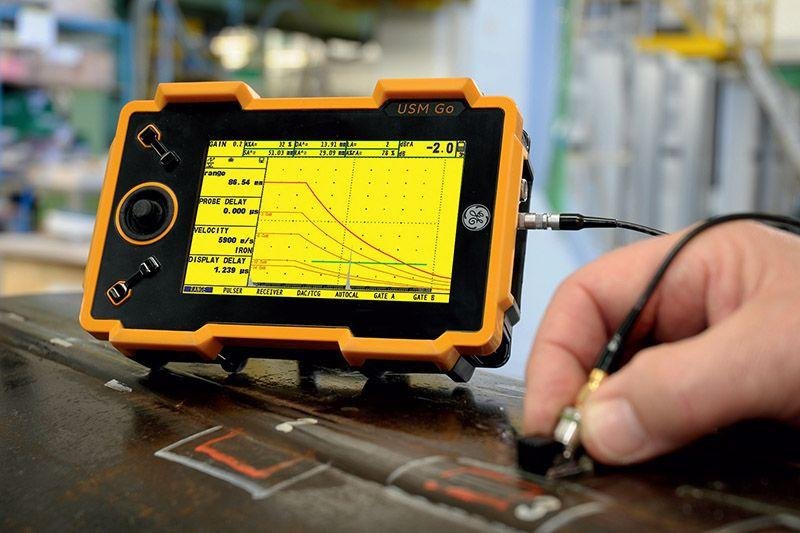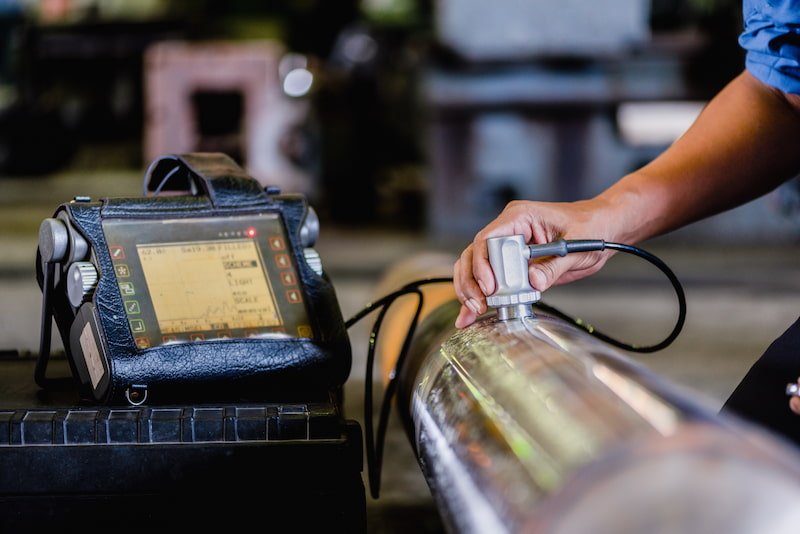The non-destructive testing (NDT) instruments market is experiencing substantial growth and is projected to continue its upward trajectory in the coming years. With the increasing need for accurate and reliable testing solutions across various industries, NDT instruments play a crucial role in ensuring quality and safety standards are met. In this article, we will delve into the key aspects of the non-destructive testing instruments market, including its growth, size, share, trends, and forecast for the period 2023 to 2030. We will also explore the contributions of industry leaders such as General Electric, Olympus Corporation, and Baker Hughes in shaping the market landscape.
Non-Destructive Testing Instruments Market: An Overview
Non-destructive testing instruments are specialized tools used to evaluate the integrity and properties of materials, components, and structures without causing any damage or alteration. These instruments employ a wide range of techniques, including ultrasonic testing, radiographic testing, magnetic particle testing, liquid penetrant testing, and visual testing, among others. The market for NDT instruments is driven by the growing emphasis on quality control and safety standards across industries such as aerospace, automotive, oil and gas, power generation, and manufacturing.

Key Factors Driving the Market Growth
- Increasing Demand for Quality Assurance: The need for reliable and accurate testing solutions to ensure the quality and integrity of materials and products is a major driver for the NDT instruments market. Industries such as aerospace and automotive require stringent quality control measures to meet regulatory standards and customer expectations.
- Advancements in Technology: Technological advancements in NDT instruments, such as the integration of artificial intelligence (AI) and machine learning (ML), have improved the efficiency and accuracy of testing processes. Advanced sensors, imaging techniques, and data analysis capabilities have revolutionized the way non-destructive testing is performed.
- Growing Focus on Preventive Maintenance: The adoption of preventive maintenance strategies is gaining traction across industries, as it helps in avoiding costly downtime and equipment failures. Non-destructive testing instruments play a vital role in assessing the condition of assets and identifying potential issues before they escalate into major problems.
- Expansion of Infrastructure Projects: Increasing investments in infrastructure projects worldwide, including the construction of bridges, pipelines, and power plants, drive the demand for non-destructive testing instruments. These instruments ensure the structural integrity and safety of infrastructure assets.
- Stringent Regulatory Standards: Regulatory bodies and industry associations have established strict standards and guidelines for quality control and safety in various sectors. Compliance with these standards necessitates the use of non-destructive testing instruments to ensure adherence to regulations.
Market Size and Share
The non-destructive testing instruments market is witnessing steady growth, with a projected market size of USD 10.28 billion by 2023, according to a report by MarketsandMarkets. The market is expected to register a compound annual growth rate (CAGR) of 6.5% during the forecast period (2023-2030). The Asia Pacific region is anticipated to dominate the market, owing to rapid industrialization and infrastructure development in countries like China and India.
Emerging Trends in the Non-Destructive Testing Instruments Market
The non-destructive testing instruments market is constantly evolving, driven by technological advancements and changing industry requirements. Several emerging trends are shaping the future of the market, offering new opportunities and challenges. Let’s explore some of these trends:
1. Integration of Artificial Intelligence (AI) and Machine Learning (ML)
The integration of AI and ML technologies is revolutionizing the non-destructive testing instruments market. These technologies enable the automation of testing processes, real-time data analysis, and predictive maintenance. AI and ML algorithms can quickly analyze large volumes of data, detect anomalies, and provide actionable insights for improved decision-making.
2. Portable and Handheld Instruments
There is a growing demand for portable and handheld non-destructive testing instruments that offer flexibility and ease of use. These instruments allow for on-site testing and inspection, reducing the need for samples to be sent to laboratories. Portable instruments are particularly valuable in industries such as construction and infrastructure, where access to remote locations is often challenging.
3. Advancements in Digital Radiography
Digital radiography is witnessing significant advancements, offering higher resolution, faster imaging, and improved workflow efficiency. Digital detectors and software solutions enable enhanced image analysis, eliminating the need for chemical processing and reducing the time required for inspections. These advancements contribute to faster and more accurate flaw detection and evaluation.
4. Use of Drones for Inspections
Drones, or unmanned aerial vehicles (UAVs), are increasingly being employed for non-destructive testing inspections in areas that are difficult to access. Equipped with high-resolution cameras and sensors, drones can capture detailed images and videos of structures, pipelines, and other assets. This technology enables inspectors to detect defects and assess the condition of assets without the need for costly and time-consuming scaffolding or equipment setup.
5. Data Integration and Connectivity
The integration of non-destructive testing instruments with data management systems and connectivity solutions is becoming more prevalent. This integration allows for seamless data transfer, storage, and analysis, enabling real-time decision-making and remote collaboration. Cloud-based platforms and IoT (Internet of Things) connectivity further enhance data accessibility and enable centralized control of testing activities.
6. Focus on Industry-Specific Solutions
As industries have unique requirements and challenges, there is a growing focus on developing industry-specific non-destructive testing solutions. For example, the aviation industry requires specialized instruments for inspecting aircraft components, while the oil and gas industry needs instruments capable of operating in harsh environments. Tailoring solutions to specific industries ensures higher accuracy, efficiency, and compliance with industry standards.
Non-Destructive Testing Instruments market key players:
- General Electric
- Olympus Corporation
- Baker Hughes
- YXLON International GmbH (COMET Holding AG)
- OkoNDT group
- Applus+ Laboratories
- Mistras Group Inc.
- Controle Mesure Systemes SA
- Fujifilm Corporation
- Bureau Veritas SA
- Nikon Metrology NV
- Intertek Group PLC
- Innospection Limited
- Magnaflux Corp.
- Sonatest Ltd
- Zetec Inc
- Bosello High Technology srl
Market segmentation:
The classification of the global Non-Destructive Testing Instruments market is based on the product type, which includes:
- Radiography Testing Equipment
- Ultrasonic Testing Equipment
- Magnetic Particle Testing Equipment
- Liquid Penetrant Testing Equipment
- Visual Inspection Equipment
- Eddy Current Equipment
- Other Technologies Equipment
The global Non-Destructive Testing Instruments market is divided according to the end user into:
- Oil and Gas
- Power and Energy
- Aerospace and Defense
- Automotive and Transportation
- Construction
- Other End-user Industries
Market Segment by Sales Channels:
- Direct Channel
- Distribution Channel
In conclusion, The non-destructive testing instruments market is witnessing significant growth, driven by the increasing demand for quality assurance, technological advancements, and the focus on preventive maintenance. Industry leaders such as General Electric, Olympus Corporation, and Baker Hughes are at the forefront of driving innovation and shaping the market landscape. With their advanced solutions and collaborative efforts, these companies are ensuring the integrity, safety, and quality of materials and products across various industries. As the market continues to evolve, the role of non-destructive testing instruments in ensuring reliability and compliance will remain paramount.
Read More: NDT Market forecast
FAQ’s
1. What are the key factors driving the growth of the non-destructive testing instruments market?
The key factors driving the growth of the non-destructive testing instruments market include the increasing demand for quality assurance, advancements in technology, growing focus on preventive maintenance, expansion of infrastructure projects, and stringent regulatory standards.
2. Which regions are expected to dominate the non-destructive testing instruments market?
The Asia Pacific region is anticipated to dominate the non-destructive testing instruments market, owing to rapid industrialization and infrastructure development in countries like China and India. North America and Europe are also significant markets, driven by strict quality control standards in industries such as aerospace and automotive.
3. What are non-destructive testing instruments?
Non-destructive testing instruments are specialized tools used to evaluate the integrity and properties of materials, components, and structures without causing any damage or alteration. These instruments employ various techniques such as ultrasonic testing, radiographic testing, magnetic particle testing, liquid penetrant testing, and visual testing to assess the quality and safety of materials and products.
4. What is the projected market size for non-destructive testing instruments?
According to a report by MarketsandMarkets, the projected market size for non-destructive testing instruments is USD 10.28 billion by 2023. The market is expected to register a compound annual growth rate (CAGR) of 6.5% during the forecast period (2023-2030). The Asia Pacific region is anticipated to dominate the market due to rapid industrialization and infrastructure development in countries like China and India.
5. What are some emerging trends in the non-destructive testing instruments market?
Some emerging trends in the non-destructive testing instruments market include the integration of artificial intelligence (AI) and machine learning (ML), the demand for portable and handheld instruments, advancements in digital radiography, the use of drones for inspections, data integration and connectivity, and a focus on industry-specific solutions. These trends are shaping the future of the market and offering new opportunities and challenges.
6. Who are the key players in the non-destructive testing instruments market?
Key players in the non-destructive testing instruments market include General Electric, Olympus Corporation, Baker Hughes, YXLON International GmbH, OkoNDT group, Applus+ Laboratories, Mistras Group Inc., Controle Mesure Systemes SA, Fujifilm Corporation, Bureau Veritas SA, Nikon Metrology NV, Intertek Group PLC, Innospection Limited, Magnaflux Corp., Sonatest Ltd, Zetec Inc, and Bosello High Technology srl. These industry leaders are at the forefront of driving innovation and shaping the market landscape with their advanced solutions and collaborative efforts.
Read Also: House Price Predictions for Next 5 Years in UK: Experts’ Opinions
You May Also Like: Solana Blockchain May Become ‘Apple of Crypto’, Says Co-founder

